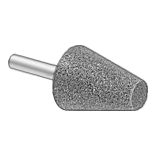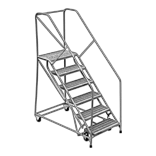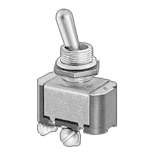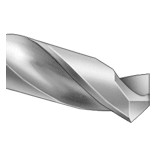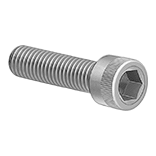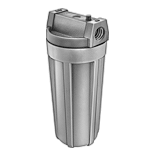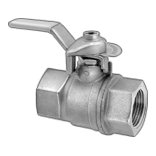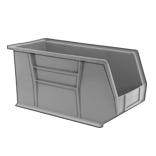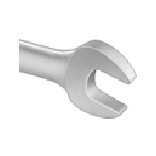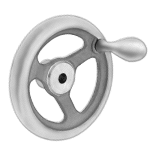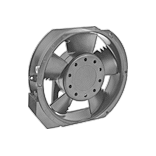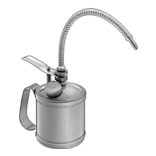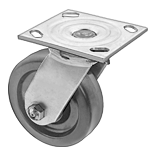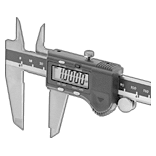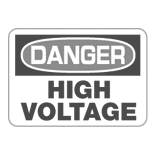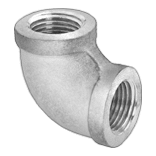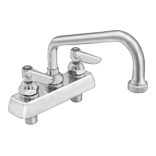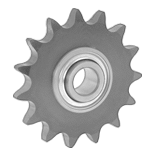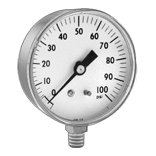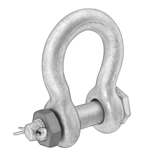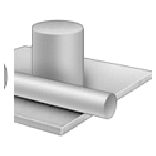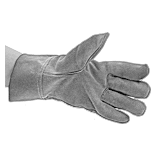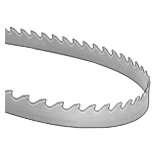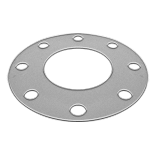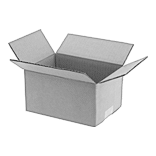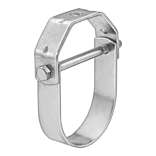About Structural Adhesives
More
Low-Melting-Point Solder for Low-Temperature Applications

Even as temperatures approach absolute zero, this indium solder remains soft and malleable, allowing it to form an airtight seal between metal and certain non-metal materials. It’s often used in cryogenic applications, including those with liquid nitrogen. This solder has a lower melting point than most solders, so it’s good for sensitive assemblies, such as semiconductors and electronic components. Unlike commonly used tin-based solders, this solder won’t damage gold plating on circuit boards. It’s also a good conductor of heat and electricity. More durable than standard tin-lead solder, this solder is less likely to crack from repeated temperature swings. It’s low outgassing, so it’s good for use in high-vacuum applications.
This indium-based solder can be cold welded, meaning it will bond to itself without heat. You can also use it for step soldering with traditional solders. It does not have a flux core; choose soldering flux to prepare workpieces for this solder.
Leaded solder has greater tensile strength and density than other indium-based solders, giving it a stronger hold.
Lead-free solder is safer to use than leaded solder and helps meet industry regulations. Solder that is 100% indium has better thermal conductivity than solder that contains tin, and will cold weld more easily. However, it has lower tensile and shear strength than solder with tin. Solder with 48% tin has greater tensile and shear strength than 100% indium solder, but lower thermal and electrical conductivity.
Material Composition | ||||||||||
|---|---|---|---|---|---|---|---|---|---|---|
| Solder Composition | Indium | Lead | Silver | Melting Temperature, °F | Thermal Conductivity, W/m-°C | Tensile Strength, psi | Diameter | Weight, oz. | Each | |
For Joining Aluminum, Brass, Bronze, Ceramic, Glass, Gold, Nickel Alloys, Quartz, Stainless Steel, Steel, Zinc | ||||||||||
| In80Pb15Ag5 | 80% | 15% | 5% | 310° | 43 | 2,550 | 0.030" | 0.16 | 0000000 | 0000000 |
Material Composition | ||||||||||
|---|---|---|---|---|---|---|---|---|---|---|
| Solder Composition | Indium | Tin | Lead | Melting Temperature, °F | Thermal Conductivity, W/m-°C | Tensile Strength, psi | Diameter | Weight, oz. | Each | |
For Joining Aluminum, Brass, Bronze, Ceramic, Glass, Nickel Alloys, Quartz, Stainless Steel, Steel, Zinc | ||||||||||
| In52Sn48 | 52% | 48% | 0% | 245° | 34 | 1,720 | 0.030" | 0.11 | 0000000 | 0000000 |
| In100 | 100% | __ | 0% | 315° | 86 | 270 | 0.030" | 0.11 | 0000000 | 000000 |
Low-Melting-Point Solder Ribbon for Low-Temperature Applications

Made with indium this solder is soft and malleable—even as temperatures approach absolute zero—allowing this solder to form an airtight seal between metal and certain non-metal materials. It’s often used in cryogenic applications, including those with liquid nitrogen. Thanks to its ribbon shape, this solder is easier to use on large, flat areas than wire solder.
This solder has a lower melting point than most solders, making it good for sensitive assemblies, such as semiconductors and electronic components. Unlike commonly used tin-based solders, this solder won’t damage gold plating on circuit boards. It’s also a good conductor of heat and electricity. More durable than standard tin-lead solder, this solder is less likely to crack from repeated temperature swings. It’s low outgassing, so you can also use it in high-vacuum applications.
This indium-based solder can be cold welded, meaning it will bond to itself without heat. You can also use it for step soldering with traditional solders. It does not have a flux core, choose soldering flux to prepare workpieces for this solder.
Leaded solder has greater tensile strength and density than other indium-based solders, giving it a stronger hold.
Lead-free solder is safer to use than leaded solder and helps meet industry regulations.
Material Composition | ||||||||||||
|---|---|---|---|---|---|---|---|---|---|---|---|---|
| Solder Composition | Indium | Lead | Silver | Melting Temperature, °F | Thermal Conductivity, W/m-°C | Tensile Strength, psi | Length | Width | Thickness | Weight, oz. | Each | |
For Joining Aluminum, Brass, Bronze, Ceramic, Glass, Gold, Nickel Alloys, Quartz, Stainless Steel, Steel, Zinc | ||||||||||||
| In80Pb15Ag5 | 80% | 15% | 5% | 310° | 43 | 2,550 | 12" | 1" | 0.002" | 0.1 | 0000000 | 0000000 |
Material Composition | ||||||||||||
|---|---|---|---|---|---|---|---|---|---|---|---|---|
| Solder Composition | Indium | Tin | Lead | Melting Temperature, °F | Thermal Conductivity, W/m-°C | Tensile Strength, psi | Length | Width | Thickness | Weight, oz. | Each | |
For Joining Aluminum, Brass, Bronze, Ceramic, Glass, Gold, Nickel Alloys, Quartz, Stainless Steel, Steel, Zinc | ||||||||||||
| In52Sn48 | 52% | 48% | 0% | 245° | 34 | 1,720 | 12" | 1" | 0.002" | 0.1 | 0000000 | 0000000 |
| In100 | 100% | __ | 0% | 315° | 86 | 270 | 12" | 1" | 0.002" | 0.1 | 0000000 | 000000 |
Heat-Transfer Mounting Tape

Use this tape to attach components to heat sinks and metal chassis walls in place of screws and other mechanical fasteners. It conducts heat away from sensitive electronics.
Aluminum foil tape conducts electricity. It also meets ASTM E595, a standard used by NASA, which means it produces almost no volatile emissions that could damage sensitive electronics, even in a high vacuum.
| Wd. | Lg. | Overall Thick. | Adhesive Location | Adhesive Type | Temp. Range, °F | Voltage Rating | Thermal Conductivity, W/m-K | Specifications Met | Color | Each | |
Aluminum Foil | |||||||||||
|---|---|---|---|---|---|---|---|---|---|---|---|
| 1/2" | 3ft. | 0.009" | Both Sides | Acrylic | -20° to 255° | Not Rated | 1.4 | ASTM E595 | Gray | 00000000 | 000000 |
| 1/2" | 12ft. | 0.009" | Both Sides | Acrylic | -20° to 255° | Not Rated | 1.4 | ASTM E595 | Gray | 00000000 | 000000 |
| 1" | 3ft. | 0.009" | Both Sides | Acrylic | -20° to 255° | Not Rated | 1.4 | ASTM E595 | Gray | 0000000 | 00000 |
| 1" | 12ft. | 0.009" | Both Sides | Acrylic | -20° to 255° | Not Rated | 1.4 | ASTM E595 | Gray | 0000000 | 000000 |
| 2" | 3ft. | 0.009" | Both Sides | Acrylic | -20° to 255° | Not Rated | 1.4 | ASTM E595 | Gray | 0000000 | 000000 |
| 2" | 12ft. | 0.009" | Both Sides | Acrylic | -20° to 255° | Not Rated | 1.4 | ASTM E595 | Gray | 0000000 | 000000 |
Conductive Aluminum Foil Electrical Tape

More conformable than copper foil electrical tape, this tape bonds to textured electronic housings, round cables, and other curved and irregular surfaces. Since it doesn’t leave gaps, it’s a great shield against electromagnetic interference (EMI). Its conductive backing and adhesive convert EMI into heat and reflect it away from your electronics. Use this tape on surfaces that can’t be soldered.
| Wd. | Overall Thick. | Adhesive Type | Temperature Range, °F | Voltage Rating | Specifications Met | Color | Each | |
15 ft. | ||||||||
|---|---|---|---|---|---|---|---|---|
| 1/4" | 0.0036" | Acrylic | -40° to 325° | Not Rated | UL 510 | Silver | 000000000 | 00000 |
| 1/2" | 0.0036" | Acrylic | -40° to 325° | Not Rated | UL 510 | Silver | 000000000 | 0000 |
| 3/4" | 0.0036" | Acrylic | -40° to 325° | Not Rated | UL 510 | Silver | 000000000 | 00000 |
| 1" | 0.0036" | Acrylic | -40° to 325° | Not Rated | UL 510 | Silver | 000000000 | 00000 |
| 2" | 0.0036" | Acrylic | -40° to 325° | Not Rated | UL 510 | Silver | 0000000 | 00000 |
| 3" | 0.0036" | Acrylic | -40° to 325° | Not Rated | UL 510 | Silver | 000000000 | 00000 |
| 4" | 0.0036" | Acrylic | -40° to 325° | Not Rated | UL 510 | Silver | 000000000 | 00000 |
| 5" | 0.0036" | Acrylic | -40° to 325° | Not Rated | UL 510 | Silver | 000000000 | 00000 |
| 6" | 0.0036" | Acrylic | -40° to 325° | Not Rated | UL 510 | Silver | 000000000 | 00000 |
108 ft. | ||||||||
| 1/4" | 0.0036" | Acrylic | -40° to 325° | Not Rated | UL 510 | Silver | 000000000 | 00000 |
| 1/2" | 0.0036" | Acrylic | -40° to 325° | Not Rated | UL 510 | Silver | 000000000 | 00000 |
| 3/4" | 0.0036" | Acrylic | -40° to 325° | Not Rated | UL 510 | Silver | 000000000 | 00000 |
| 1" | 0.0036" | Acrylic | -40° to 325° | Not Rated | UL 510 | Silver | 000000000 | 00000 |
| 2" | 0.0036" | Acrylic | -40° to 325° | Not Rated | UL 510 | Silver | 0000000 | 000000 |
| 3" | 0.0036" | Acrylic | -40° to 325° | Not Rated | UL 510 | Silver | 000000000 | 000000 |
| 4" | 0.0036" | Acrylic | -40° to 325° | Not Rated | UL 510 | Silver | 000000000 | 000000 |
| 5" | 0.0036" | Acrylic | -40° to 325° | Not Rated | UL 510 | Silver | 000000000 | 000000 |
| 6" | 0.0036" | Acrylic | -40° to 325° | Not Rated | UL 510 | Silver | 000000000 | 000000 |
Conductive Mesh Electrical Tape

This polyester tape has a woven mesh edge that conducts electricity. Use it to shield cables and electronic components from EMI (electromagnetic interference). When wrapping objects, tape should overlap half of its width to achieve a highly effective four-ply shielding.
| Wd. | Lg., ft. | Overall Thick. | Material | Edge Material | Adhesive Type | Temperature Range, °F | Voltage Rating | Shielding Effectiveness @ Volume | Color | Each | |
| 1" | 16 | 0.025" | Aluminum, Polyester Plastic | Tinned Copper Mesh | Acrylic | -40° to 345° | Not Rated | 1 MHz @ 65 dB | Silver | 0000000 | 000000 |
| 1" | 16 | 0.025" | Copper, Polyester Plastic | Tinned Copper Mesh | Acrylic | -40° to 345° | Not Rated | 1 MHz @ 70 dB | Silver | 0000000 | 00000 |
Low-Outgassing Conductive Aluminum Foil Electrical Tape

Tested to meet ASTM E595, a standard used by NASA, this tape gives off almost no volatile emissions that could damage sensitive electronics, even in a vacuum. It’s more conformable than copper tape, so you can cover textured housings and round cables without leaving gaps for electromagnetic interference (EMI) to get in. When EMI makes contact, the conductive backing and adhesive convert it into heat and actively reflect it away. The conductivity of this tape also makes it great for electrical connections. Use it on surfaces that can’t be soldered.
Conductive Cloth Electrical Tape

Made of polyester fabric with a copper/nickel filler, this tape is highly conductive throughout, including the adhesive. Use it to shield cables and electronic components from EMI (electromagnetic interference).
| Lg., ft. | Wd. | Overall Thick. | Material | Adhesive Type | Temp. Range, °F | Voltage Rating | Shielding Effectiveness @ Volume | Color | Each | |
| 3 | 1" | 0.0048" | Copper, Nickel, Polyester Cloth | Acrylic | -40° to 155° | Not Rated | 10 MHz @ 95 dB | Gray | 0000000 | 000000 |
| 3 | 2" | 0.0048" | Copper, Nickel, Polyester Cloth | Acrylic | -40° to 155° | Not Rated | 10 MHz @ 95 dB | Gray | 0000000 | 00000 |
| 12 | 1" | 0.0048" | Copper, Nickel, Polyester Cloth | Acrylic | -40° to 155° | Not Rated | 10 MHz @ 95 dB | Gray | 0000000 | 00000 |
| 12 | 2" | 0.0048" | Copper, Nickel, Polyester Cloth | Acrylic | -40° to 155° | Not Rated | 10 MHz @ 95 dB | Gray | 0000000 | 000000 |
| 25 | 1" | 0.0048" | Copper, Nickel, Polyester Cloth | Acrylic | -40° to 155° | Not Rated | 10 MHz @ 95 dB | Gray | 0000000 | 000000 |
| 25 | 2" | 0.0048" | Copper, Nickel, Polyester Cloth | Acrylic | -40° to 155° | Not Rated | 10 MHz @ 95 dB | Gray | 0000000 | 000000 |
| 50 | 1" | 0.0048" | Copper, Nickel, Polyester Cloth | Acrylic | -40° to 155° | Not Rated | 10 MHz @ 95 dB | Gray | 0000000 | 000000 |
| 50 | 2" | 0.0048" | Copper, Nickel, Polyester Cloth | Acrylic | -40° to 155° | Not Rated | 10 MHz @ 95 dB | Gray | 0000000 | 000000 |
Conductive Copper Foil Electrical Tape

Use this tape to modify printed circuit boards, shield components from EMI/RFI (electromagnetic interference/radio-frequency interference), and prototype wiring-board layout and design. Made of copper, it resists chemicals better than aluminum foil electrical tape. Plus, you can solder it.
Tape with nonconductive adhesive is only conductive on the surface, so electrical charge won’t travel through the tape. Choose it for shielding cables without creating unwanted electrical connections.
Tape with conductive adhesive makes easy electrical connections—charge travels both along and through the tape. Since it’s more conductive, it’s better at shielding against EMI than tape with nonconductive adhesive.
| Wd. | Overall Thick. | Adhesive Type | Temperature Range, °F | Voltage Rating | Specifications Met | Lg., ft. | Each | |
Short Roll | ||||||||
|---|---|---|---|---|---|---|---|---|
Nonconductive Adhesive | ||||||||
| 1/4" | 0.0029" | Acrylic | -40° to 325° | Not Rated | UL 510 | 18 | 000000000 | 00000 |
| 1/2" | 0.0029" | Acrylic | -40° to 325° | Not Rated | UL 510 | 18 | 000000000 | 00000 |
| 3/4" | 0.0029" | Acrylic | -40° to 325° | Not Rated | UL 510 | 18 | 000000000 | 00000 |
| 1" | 0.0029" | Acrylic | -40° to 325° | Not Rated | UL 510 | 18 | 000000000 | 00000 |
| 2" | 0.0029" | Acrylic | -40° to 325° | Not Rated | UL 510 | 18 | 000000000 | 00000 |
| 3" | 0.0029" | Acrylic | -40° to 325° | Not Rated | UL 510 | 18 | 000000000 | 00000 |
| 6" | 0.0029" | Acrylic | -40° to 325° | Not Rated | UL 510 | 18 | 00000000 | 000000 |
Conductive Adhesive | ||||||||
| 1/4" | 0.0035" | Acrylic | -40° to 325° | Not Rated | MIL-T-47012, UL 510 | 18 | 000000000 | 00000 |
| 1/2" | 0.0035" | Acrylic | -40° to 325° | Not Rated | MIL-T-47012, UL 510 | 18 | 000000000 | 00000 |
| 3/4" | 0.0035" | Acrylic | -40° to 325° | Not Rated | MIL-T-47012, UL 510 | 18 | 000000000 | 00000 |
| 1" | 0.0035" | Acrylic | -40° to 325° | Not Rated | MIL-T-47012, UL 510 | 18 | 000000000 | 00000 |
| 2" | 0.0035" | Acrylic | -40° to 325° | Not Rated | MIL-T-47012, UL 510 | 18 | 000000000 | 00000 |
| 3" | 0.0035" | Acrylic | -40° to 325° | Not Rated | MIL-T-47012, UL 510 | 18 | 000000000 | 000000 |
| 6" | 0.0035" | Acrylic | -40° to 325° | Not Rated | MIL-T-47012, UL 510 | 18 | 000000000 | 000000 |
Long Roll | ||||||||
Nonconductive Adhesive | ||||||||
| 1/4" | 0.0029" | Acrylic | -40° to 325° | Not Rated | UL 510 | 108 | 000000000 | 00000 |
| 1/2" | 0.0029" | Acrylic | -40° to 325° | Not Rated | UL 510 | 108 | 000000000 | 00000 |
| 3/4" | 0.0029" | Acrylic | -40° to 325° | Not Rated | UL 510 | 108 | 000000000 | 00000 |
| 1" | 0.0029" | Acrylic | -40° to 325° | Not Rated | UL 510 | 108 | 000000000 | 00000 |
| 2" | 0.0029" | Acrylic | -40° to 325° | Not Rated | UL 510 | 108 | 000000000 | 000000 |
| 3" | 0.0029" | Acrylic | -40° to 325° | Not Rated | UL 510 | 108 | 000000000 | 000000 |
Conductive Adhesive | ||||||||
| 1/4" | 0.0035" | Acrylic | -40° to 325° | Not Rated | MIL-T-47012, UL 510 | 54 | 000000000 | 00000 |
| 1/2" | 0.0035" | Acrylic | -40° to 325° | Not Rated | MIL-T-47012, UL 510 | 54 | 000000000 | 00000 |
| 3/4" | 0.0035" | Acrylic | -40° to 325° | Not Rated | MIL-T-47012, UL 510 | 54 | 000000000 | 00000 |
| 1" | 0.0035" | Acrylic | -40° to 325° | Not Rated | MIL-T-47012, UL 510 | 54 | 000000000 | 00000 |
| 2" | 0.0035" | Acrylic | -40° to 325° | Not Rated | MIL-T-47012, UL 510 | 54 | 000000000 | 000000 |
| 3" | 0.0035" | Acrylic | -40° to 325° | Not Rated | MIL-T-47012, UL 510 | 54 | 000000000 | 000000 |
| 6" | 0.0035" | Acrylic | -40° to 325° | Not Rated | MIL-T-47012, UL 510 | 54 | 000000000 | 000000 |
Conductive Surface Fillers for Electronics

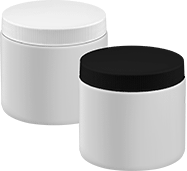
A high silver content allows these surface fillers to conduct electricity and heat. Use them to fill gaps and rebuild missing material on electrical connections or to assemble new components. They come as two parts. The size listed is the combined total of the two parts.
Volume resistivity measures how well a material opposes the flow of electricity. The lower the rating, the more electricity it conducts.
Thermal conductivity measures a material’s ability to transfer heat. The higher the rating, the more heat it transfers.
Container | Temp. Range, °F | ||||||||||||
|---|---|---|---|---|---|---|---|---|---|---|---|---|---|
| Mfr. Model No. | Size, fl. oz. | Net Weight, oz. | Type | Begins to Harden | Reaches Full Strength | Thermal Conductivity, W/m-K | Volume Resistivity, ohms-cm | Mix Ratio | Min. | Max. | For Use On | Each | |
Loctite® Surface Fillers | |||||||||||||
| 3888 | __ | 0.09 | One-Time-Use Packet | 90 min. | 24 hrs. | 1.44 | 0.001 | 100:6 | -40° | 170° | Aluminum, Brass, Bronze, Copper, Steel, Stainless Steel, Titanium, Polycarbonate Plastic | 0000000 | 000000 |
Surface Fillers | |||||||||||||
| __ | __ | 0.09 | One-Time-Use Packet | 90 min. | 24 hrs. | 6.05 | 0.009 | 100:6 | -75° | 250° | Aluminum, Brass, Bronze, Copper, Steel, Stainless Steel, Titanium, Ceramic, Glass | 0000000 | 00000 |
| __ | __ | 0.35 | One-Time-Use Packet | 90 min. | 24 hrs. | 6.05 | 0.009 | 100:6 | -75° | 250° | Aluminum, Brass, Bronze, Copper, Steel, Stainless Steel, Titanium, Ceramic, Glass | 0000000 | 000000 |
| __ | 0.5 | __ | Jar | 4 hrs. | 5 days | 5.77 | 0.0004 | 1:1 | Not Rated | 300° | Aluminum, Brass, Copper, Steel, Stainless Steel | 0000000 | 000000 |
| __ | 1 | __ | Jar | 4 hrs. | 5 days | 5.77 | 0.0004 | 1:1 | Not Rated | 300° | Aluminum, Brass, Copper, Steel, Stainless Steel | 0000000 | 000000 |
Conductive Surface Filler Pens for Electronics


Dispense ready-to-use conductive liquid to fill pits and small gaps on circuit board components. These pens are also used to sketch and repair conductive pathways.
Product labeling requirements restrict sales to the listed areas.
Carbon acrylic pens should be used where only a small amount of conductivity is needed, such as circuit boards in keyboards. Their high surface resistivity only allows a small current to pass.
Nickel acrylic pens are best for general purpose repairs, such as bridges and traces in printed circuit boards. They have a medium surface resistivity, so they're a good balance between carbon acrylic and silver epoxy pens.
Silver epoxy pens are the most versatile—use them for any type of repair as well as for repairs that require excellent conductivity, such as connecting through holes on circuit boards without adding jumpers, wiring, or solder. Since they have the lowest surface resistivity, they allow the most current to pass.
Tip | ||||||||||||||
|---|---|---|---|---|---|---|---|---|---|---|---|---|---|---|
| Container Size, fl. oz. | Dia. | Shape | Begins to Harden, min. | Reaches Full Strength | Surface Resistivity, ohms/sq. | Consistency | Max. Thick. | For Use Outdoors | Temp. Range, °F | Color | For Use On | Cannot Be Sold To | Each | |
Carbon Acrylic | ||||||||||||||
| 0.2 | 0.06" | Point | 2 | 24 hrs. | 100 | Thin Liquid | 0.003" | Yes | -40° to 245° | Black | Plastic | Canada | 0000000 | 000000 |
Nickel Acrylic | ||||||||||||||
| 0.2 | 0.06" | Point | 2 | 24 hrs. | 0.49 | Thin Liquid | 0.004" | Yes | -40° to 245° | Gray | Plastic | Canada | 0000000 | 00000 |
Silver Epoxy | ||||||||||||||
| 0.2 | 0.03" | Point | 3 | 60 min. | 0.050 | Thin Liquid | Not Rated | No | -65° to 300° | Silver | Aluminum, Brass, Bronze, Copper, Steel, Stainless Steel, Titanium | Outside United States and Canada | 0000000 | 00000 |
Conductive Adhesives for Electronics
An alternative to solder, these flexible, silver-filled adhesives accommodate joint movement. Use them to bond electrical components and repair circuits.
Epoxy adhesives are two-part adhesives that need to be mixed together. The size listed is the combined total of the two parts.

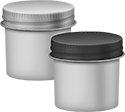
Container | |||||||||||
|---|---|---|---|---|---|---|---|---|---|---|---|
| Size, fl. oz. | Net Weight, oz. | Begins to Harden | Reaches Full Strength | Thermal Conductivity, W/m-K | Surface Resistivity, ohms-cm | Mix Ratio | Consistency | Temp. Range, °F | For Joining | Each | |
One-Time-Use Packet | |||||||||||
| __ | 0.09 | 3 hrs. | 24 hrs. | 1.55 | 0.05 | 1:1.15 | Paste | -75° to 230° | Ceramic, Glass, Metal | 0000000 | 000000 |
Can | |||||||||||
| 0.5 | __ | 4 hrs. | 5 days | 7.93 | 0.0004 | 1:1 | Paste | 80° to 265° | Metal | 0000000 | 000000 |
| 1 | __ | 4 hrs. | 5 days | 7.93 | 0.0004 | 1:1 | Paste | 80° to 265° | Metal | 0000000 | 000000 |
